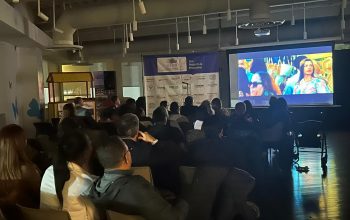news
“From Great Pessimism to the Great Change”, an article by Dr. Leonel Fernández
February 3, 2015
These days pessimism is just an albatross from the past.
Under the auspices of the Dominican Popular Bank, the eminent national historian Frank Moya Pons has recently published a new book, entitled The Great Change: Social and Economic Transformation in the Dominican Republic, 1963–2013.
Besides being illustrated with captivating photos showing the evolution of the Dominican Republic over the past 50
years, the text springs from the premise that our country has experienced a profound capitalist revolution that began at the end of the 19th century and accelerated over time to become currently unstoppable.
The proof of the revolution now underway lies, among other factors, in the fact that the “Dominican economy stopped being an export economy of primary products to become a highly diversified economy in which no single product is now as dominant as sugar once
was.”
In 1961, upon the disappearance of the dictatorship of Rafael Leonidas Trujillo, some 60 percent of foreign currency income in the country depended on sugar. Now that figure is just 6 percent, which reveals the widening of the national production base.
But the economic and social transformation of the Dominican Republic is also evidenced through the processes of industrialization, urbanization, infrastructure development, and increase in
communications, tourism, free zones, agriculture, remittances, trade, finance, technology, and small and micro-enterprises, which according to Moya Pons are the “rails along which the formation of a new middle class has moved.”
For the prominent national historian, everything has grown in the Dominican Republic over the last 50 years, and “the great change that the Dominican economy experienced can be summarized in the extraordinary growth of
the financial sector, whose indices are the best reflection of the progress of the productive sectors in the country.”
Naturally, these ideas, which Moya Pons elaborates on with figures, constitute a change of paradigm or mentality in our national historiography and the traditional ways of thinking among our intellectual elite.
Till now what predominated in intellectual and political circles in the country was a pessimistic vision of our
capacity as a nation to progress, develop, modernize, transform ourselves, and create, in short, a middle-class society with opportunities for advancement.
The publication of The Great Change crushes this vision and unequivocally shows that although there is still a long way to go in matters of sustainable development, poverty reduction, unemployment, social inclusion and equity, Dominicans can feel proud of the achievements made over the past
half-century.
The Great Dominican Pessimism
The pessimistic vision of the future of the Dominican nation arose around the end of the 19th century and the beginning of the 20th amongst a group of thinkers who, while playing a laudable role in defending our sovereignty during the U.S. occupation of 1916–1924 and in opposing the Trujillo regime, but trapped by the rural poverty of their epoch, were disheartened in their views on the future of
the country.
A pioneer, perhaps, of this mode of interpreting Dominican reality was José Ramón López, a brilliant journalist from Monte Cristi, who in a famous essay entitled “Diet and the Races” argued that the great drama of the Dominican Republic lay in nutritional insufficiency.
He expressed it in these terms: “For several decades now these peoples, especially Dominicans … eat much less than is needed, and that is the
most powerful cause of the physical degeneration and mental feebleness that we are living.”
In addition to these details, he added: “We need an apostle of food who comes to teach the people to eat, and to preach that civilization is neither acquired nor conserved without the people having a good cuisine.”
If for José Ramón López the causes of Dominican stagnation were due to lack of nutrition, for other noted national
writers like Federico García Godoy, Francisco Henríquez y Carvajal, and Américo Lugo, for example, the roots of the ill lay in racial explanations.
In his large novel The Downfall, seized and incinerated by the U.S. occupiers of 1916, Federico García Godoy presented as a cause of national underdevelopment the racial mixing arising from white Europeans, “of generally low and mean descent,” and black Africans, whom he defined as
“Ethiopian savage,” contaminated with fetishistic superstitions.
The same occurred with Francisco Henriquez y Carvajal, for whom the development of countries like the United States and Switzerland was due, among other factors, to “superior ethnic elements”; and with Américo Lugo, a symbol of the resistance against the dictatorship who nonetheless, in his thesis for the title of Doctor of Law, entitled “The Dominican State
Before Public Law,” even denied the existence of the Dominican nation, affirming:
“What with its current defects the Dominican people can in no way serve for the formation of a state. It is necessary to transfuse it with new blood….”
Later, other national thinkers like Manuel Arturo Peña Batlle, with his historical essays; Dr. Francisco Moscoso Puello, in Letters to Evelina; and Guido Despradel Batista, in his
work The Roots of Our Spirit, all also presented their own takes on what has been the great Dominican pessimism.
The Great Change
Now, however, pessimism is just an albatross from the past—a weight incurred by the poverty of yesteryear. Now, as of 50 years ago, the Dominican Republic has entered a new phase in its history characterized by a great economic and social transformation that has spelled progress, modernization,
and prosperity for the benefit of our people.
In 1960, the gross domestic product of our country was equivalent to $790 million. In 2013, it was $58 billion, that is, some 58 times more.
In 1961, the national budget was a bit more than 184 million pesos, equivalent to $184 million. In 2013 it was 516 billion pesos, equal to $12 billion.
While in 1961 the state spent $61 per year per citizen, it currently spends $1,200, that is, 20
times more.
In 1961 per capita income was $263; now it stands at $6,000.
In 1956 life expectancy was 46 years; in 2013 it had reached 72 years. Infant mortality was, in 1975, 100 children per 1,000 born. It’s now 32 per 1,000.
Fifty years ago the country had just one university and 3,000 higher education students. Now there are 44 universities and 423,000 students.
In 1963 44,000 tourists visited the
country. Last year, it was 4 million. Thirty-five years ago we had just 3,500 hotel rooms; now we have 70,000.
In 1961 the highway network spanned 5,000 kilometers. That is now 18,000 kilometers, making ours one of the countries with the highest road densities in Latin America and the Caribbean.
There are currently three million motor vehicles in our country, of which 700,000 are automobiles and 300,000 jeeps.
In 1963, bank assets
stood at $114 million. Now they are at $22 billion. Over the same period, loans were just $85 million. Now they stand at $12 billion.
Citizen deposits were multiplied by a factor of 100: in 1963 they were $157 million, and in 2013 $15 billion. In addition, there are now 2.5 million Dominicans who hold credit cards, equivalent to a third of the population.
Thirty years ago the country had just 254,000 telephone lines. Now there are 10.3 million. This
represents a national telephone density of 100 percent.
What’s more, there are nine million cellphones and three million Internet access accounts, and of every ten homes, eight have a television. There are also 76 companies offering cable TV service and 445,000 households subscribed to them.
In 1920, during the time of José Ramón López, Federico García Godoy, and Américo Lugo, just 16 percent of the population lived in cities. Today that
figure is 70 percent.
Within 50 years, Dominican society has undergone a great change, a profound transformation. We’ve gone from a rural farming society to an urban one, integrated globally.
In short, the pessimist vision has been defeated by the evidence of progress. Now it’s a matter of guaranteeing the continuity of this progress and its expansion to all.
That is the great challenge of our generation.
Related links:
http://leonelfernandez.com/articulos/del-gran-pesimismo-al-gran-cambio/





